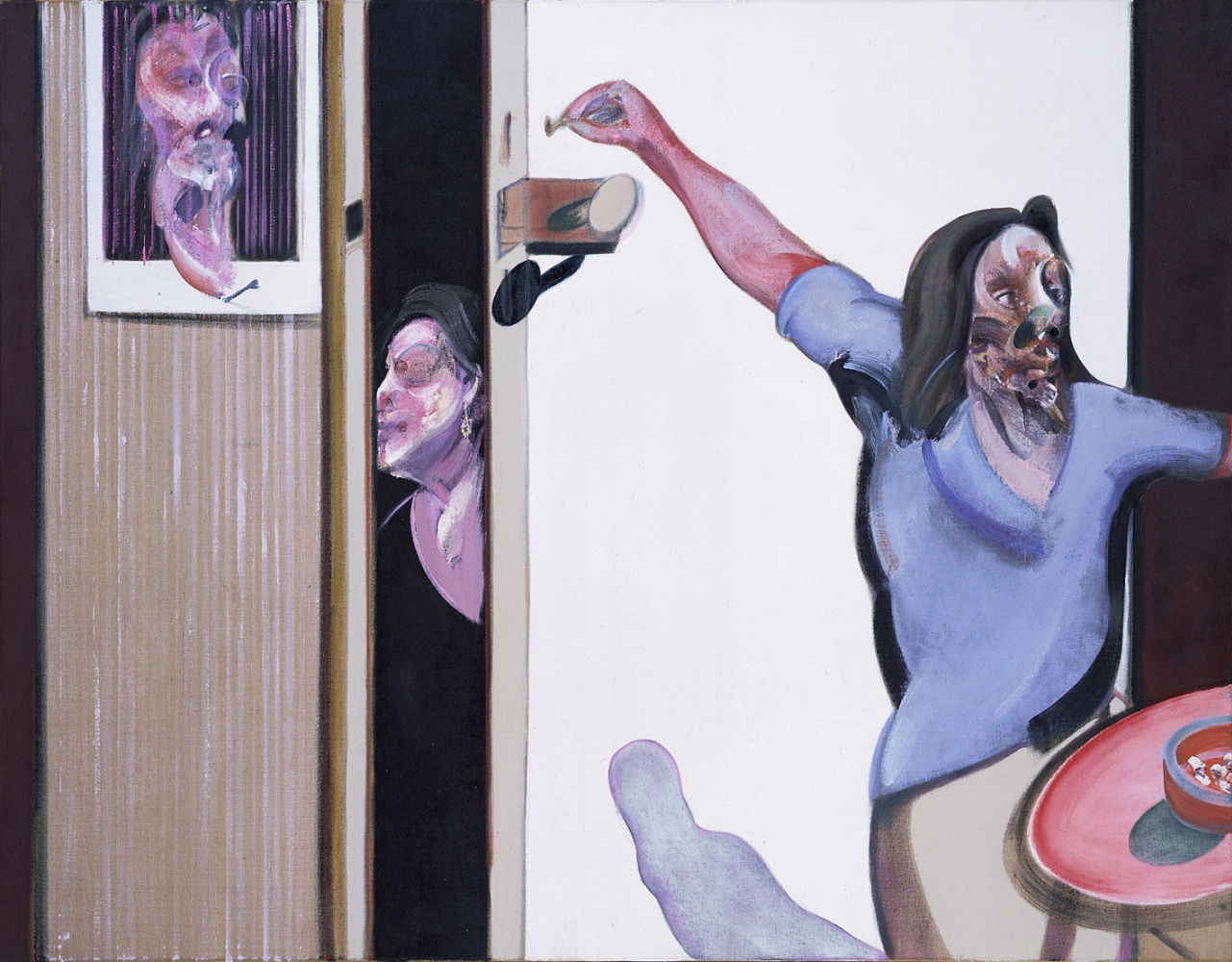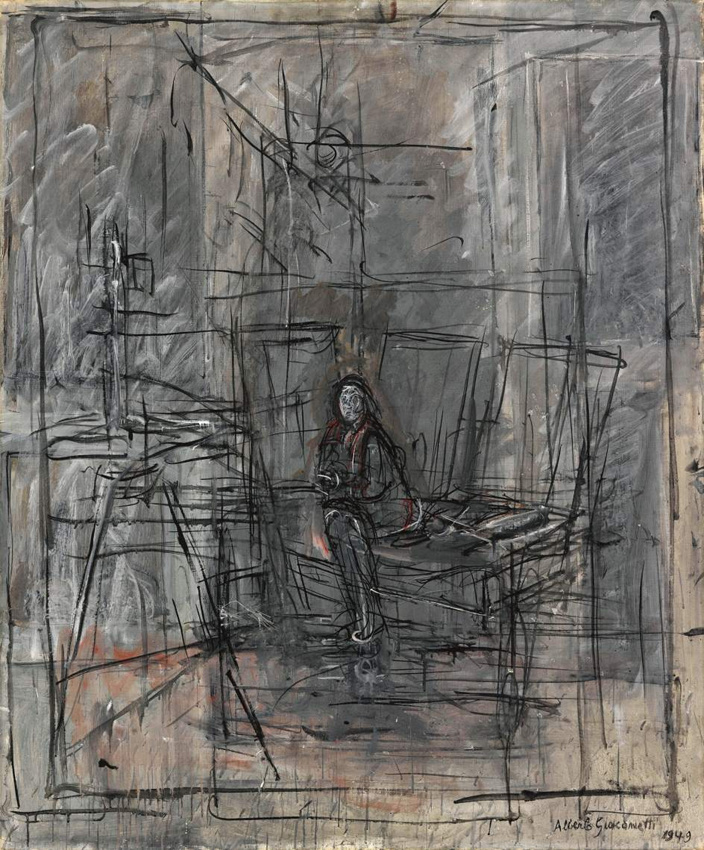Isabel Rawsthorne is one of those women who turned her own life into a work of art. She was married three times, was most likely spying and conducting anti-Nazi black propaganda during World War II, making coal sketches in the theater hall when Rudolf Nureyev rehearsed there, and coming up with the design of costumes for the Royal Opera. Alberto Giacometti once saw her from afar in the evening, dimly lit street and found his own style in sculpture. Francis Bacon painted her twenty two times and admitted that Isabel was the only woman with whom he had a close relationship.

Isabel Rawsthorne, the forgotten British artist, is now little spoken and written about. Unless in connection with the exhibitions of other artists: Francis Bacon, Alberto Giacometti, Pablo Picasso or André Derain. All of them at different times were in love or friends with Isabel — and, of course, created her portraits. She was a symbol, an embodiment of the bohemian life of the Parisian Montparnasse and London’s Soho, but today resembles a ghost which remained in many photographs, paintings and sculptures, and which, having lost its' own biography, dissolved into the others' ones. In 2012, an exhibition was held in London in honor of the centenary of her birth — and Isabel Rawsthorne was suddenly spoken of not only as a muse and a technically important requisite for the famous avant-garde
artists, but also as an independent artist and a talented designer. The Tate gallery bought several of the artist’s paintings from her relatives, and in The Royal Opera Arcade Gallery in London there appeared an impressive collection of her ballet sketches and paintings.

Isabel Rawsthorne with her friends. Photographer: Nigel Henderson. Source: www.tate.org.uk
The student and the assistant
Isabel was born in London, but spent her childhood in Liverpool. Her father was a sailor, captain of the ship and took exotic animals to the British zoos. He died very early, leaving his family without money, and Isabel — without any hope for education. Still, she received a scholarship to study at the Royal Academy of Arts and soon began to work in the studio of the sculptor Jacob Epstein.According to James Lord, the biographer of Alberto Giacometti, she was "tall, lithe, superbly proportioned and moved with the agility of a feline predator. Something exotic, suggesting obscure origins, was visible in her full mouth, high cheek-bones, and heavy-lidded, slanting eyes… She had a fierce animal confidence in her right to do as she pleased." Lord met Isabel much later, in Paris, but the magnetic impression this woman made on others was unlikely to have a limitation period or to be limited to a select few. So Jacob Epstein was also captured: Isabel left the academy, became his mistress, model and first assistant. He created several sensual busts in which the external appeal of the model was combined with an impressive and even frightening inner independence and determination.
At that time the future knight of the British Empire
Jacob Epstein was married. When their passionate affair ended and Isabel left him, the sculptor and his wife were left not only with family problems and embarrassment, but also with Jacob’s child, given birth to by Epstein’s young model and assistant. And Isabel went to study in Paris.
Revived Sculpture
The journalist of the British tabloid newspaper "Daily Express" Sefton Delmer saw the bust of Isabel by Jacob Epstein and decided that he would someday marry that woman. A few months later he was transferred to the French office and on his first evening in Paris he met a girl, a bronze image of which he fell in love with and whom he proposed to long ago in absentia. Of course, Delmer could not miss his chance. Isabel Nicholas became Isabel Delmer, and along with the new last name got a luxury apartment on the Place Vendôme, new connections with the Parisian bohemia and a valuable opportunity not to think about money. In all fairness, it has to be added that before Isabel met Delmer, she had already spent two years in Paris and become a Montparnasse celebrity.
Isabel Lambert
1930, 75×74 cm
The first French artist to paint a portrait of Isabel was André Derain. She said that Derain was the most French Frenchman she had ever known, and that, thanks to him, she had learned French. Even before her marriage, Andre was so sweet to Isabel that offered her to share a studio with him. The artist was little more than 20 years old, but she was independent, self-confident, felt completely happy in Paris, and rejected Derain’s offer. The first exhibition of the artist Isabel Rawsthorne in Paris was held in 1934 — and ended with empty rooms: all the paintings were sold out.
In the 30's, after a short fascination with surrealism and visionary, dreamy, absurd images, Alberto Giacometti returned to work with nature. And Isabel Nicholas became one of his first models, a close friend, an object of infinite admiration and creative insights.
Once in 1937, at midnight, on the Boulevard Saint Michel Giacometti saw Isabel, distant and majestic — and found the long-awaited formula according to which he would work on his special, elongated, thin sculptures. The illusory figure of Isabel became Giacometti’s archetype of a woman goddess growing out of the earth, steady and motionless, unreachable and elusive, no matter how close he came to her.
In the 30's, after a short fascination with surrealism and visionary, dreamy, absurd images, Alberto Giacometti returned to work with nature. And Isabel Nicholas became one of his first models, a close friend, an object of infinite admiration and creative insights.
Once in 1937, at midnight, on the Boulevard Saint Michel Giacometti saw Isabel, distant and majestic — and found the long-awaited formula according to which he would work on his special, elongated, thin sculptures. The illusory figure of Isabel became Giacometti’s archetype of a woman goddess growing out of the earth, steady and motionless, unreachable and elusive, no matter how close he came to her.
Isabelle in the Studio
1949, 105×87 cm
During World War II, they separated: Isabel moved to London, and Giacometti — to Switzerland. And after the war they would happily live in Paris for three months in a modest rented room and then part forever.
Black Propaganda and The Royal Ballet
During the war, Isabel, together with her husband returned to London, put aside her paints and brushes and participated in the salvation of the world. Her husband Sefton Delmer conducted radio broadcasts in German, disguised himself as a supporter of the Nazis and with the help of cunning information tricks undermined the authority of the invaders. Without direct evidence, historians still tend to believe that Isabel actively participated in this psychological war and "black propaganda" and definitely edited the anti-Nazi journal. Her circle of contacts during those years included: typographers, spies, poets, radio presenters and journalists. A common noble cause, however, did not keep her married for long. By the end of the war, Sefton and Isabel divorced.In the next 20 years, the scenery of Isabel’s life would change dramatically. She married the composer Constant Lambert, the then Chief Conductor of the Royal Opera. Lambert is practically the first British composer who admired jazz, a brilliant musician and a witty music critic. He began to drink a lot during the war and had a horror of doctors and medicine. He would die at 46 years due to undiagnosed diabetes.
But during her life with Lambert Isabel received a pass to the rehearsal halls and orders for the decoration of performances. She drew and painted dancers, found new perspectives and meanings in ballet gestures, balanced on the verge of abstraction and figurative art, worked with Rudolph Nureyev and Margot Fonteyn and called her artistic style "quintessentialism".
Francis Bacon and others
Contemporaries said that when Isabel entered the café, the visitors stopped chewing, and their forks hung in the air until she found a place and sat down at the table. In an interview, Francis Bacon, an open homosexual, said that Isabel Rawsthorne was the only woman with whom he had a personal relationship. Whatever the piquant circumstances of this relationship might be, it certainly was a long friendship that grew out of similar views on art, personal affection and long conversations while drinking a couple of bottles of wine. Since 1949, Isabel Lambert and Francis Bacon had participated in group exhibitions together, presenting the world of art a new figurative experience.Bacon created five triptychs Sketches to the Portrait of Isabel Rawsthorne and more than a dozen of her portraits. By the number of repetitive, obsessive images of the same character, so loved by Bacon, only Pope Innocent X can compete with her. Bacon stood in awe of Isabel’s French connections, her emotional and intellectual experience, connected with those artists who had the most powerful influence on him. They met almost every day, endlessly drank in bars and cafés, and had long conversations with her numerous friends-geniuses who quickly became his close acquaintances.
When Isabel’s second husband died, she married his friend, composer Alan Rawsthorne, settled with him in a thatched house in the rural part of Essex (by the way, Bacon lived next door) and spent there the last 40 years of her life. As a sign of respect for her favourite scientist, zoologist Konrad Lorenz Isabel bred geese, joined the environmental movement, traveled to Africa, Australia, Greece and painted pictures. Her paintings are meditative, inspired by the quiet pace of village life, animals and plants. Isabel died in her Essex house at the age of 80, almost a recluse; a few months later died Francis Bacon, the only one of her friends and lovers who outlived her.
Author: Anna Sidelnilkova
Author: Anna Sidelnilkova











